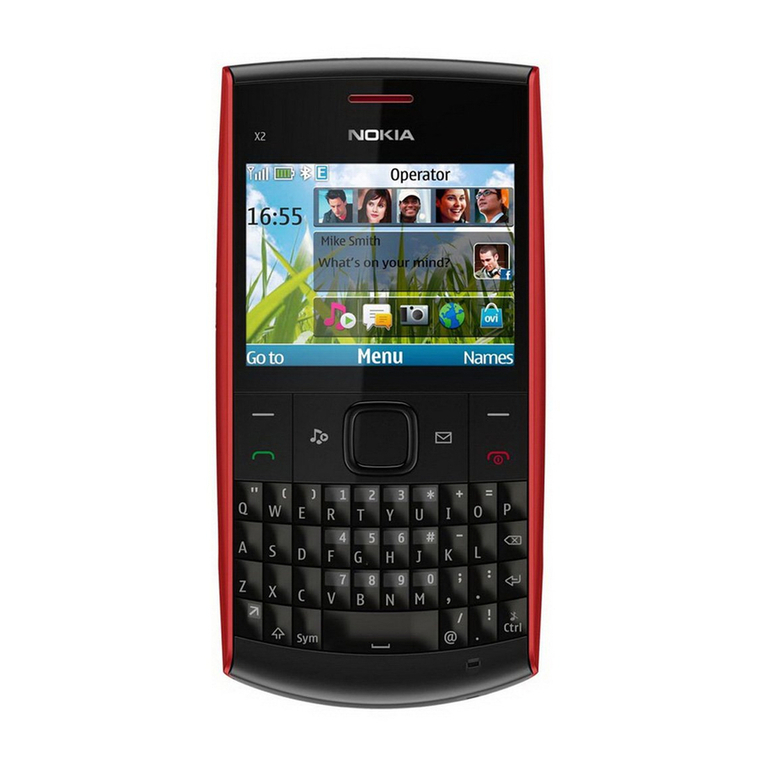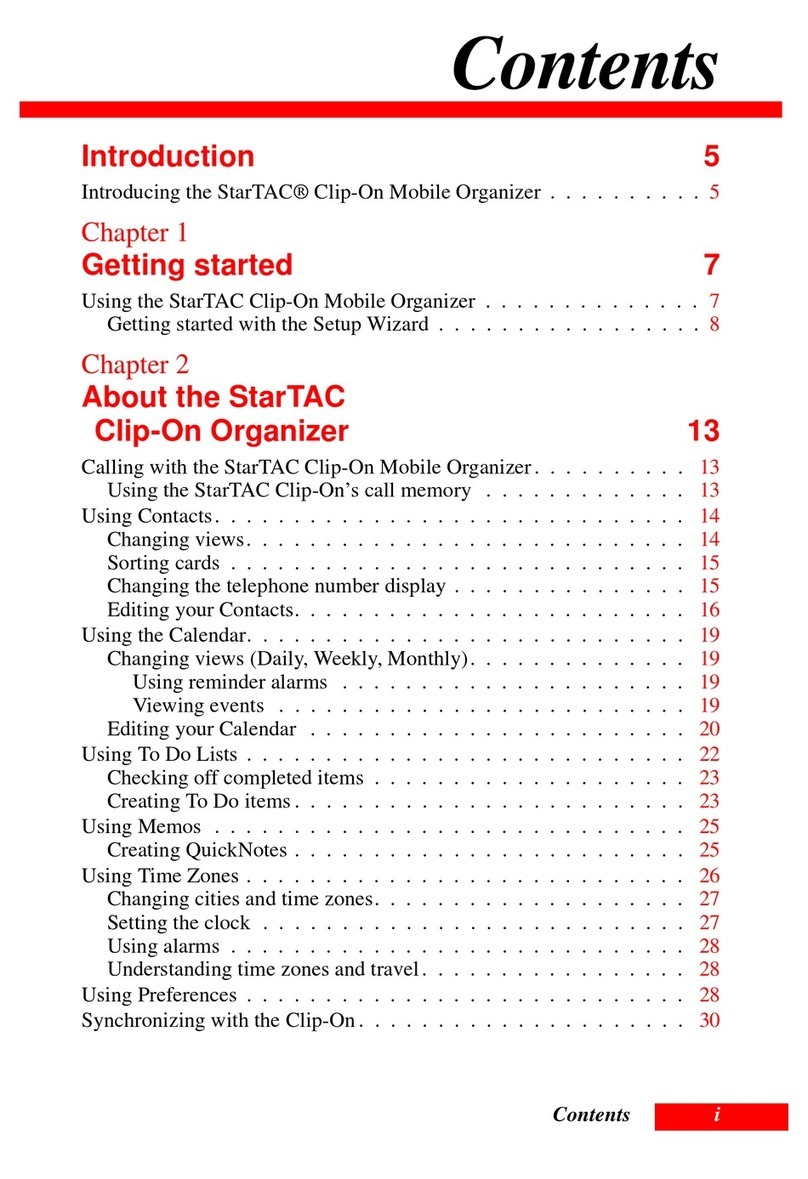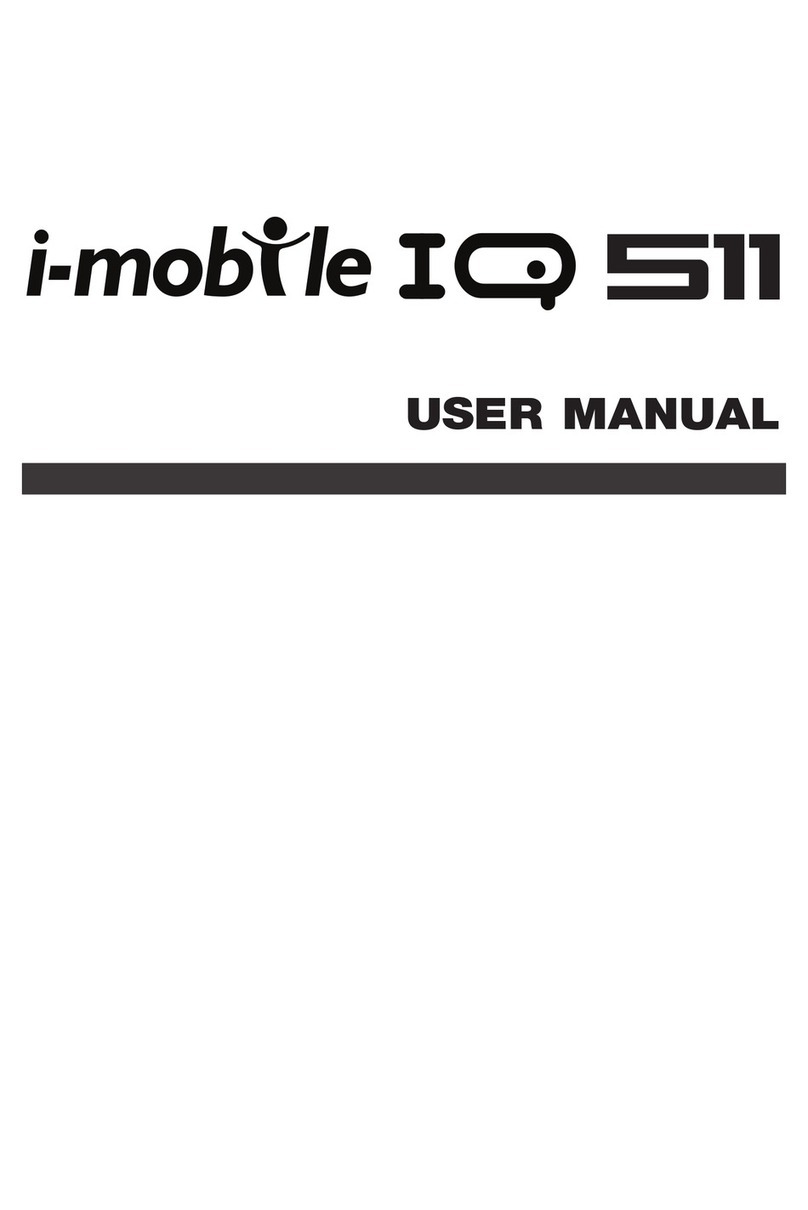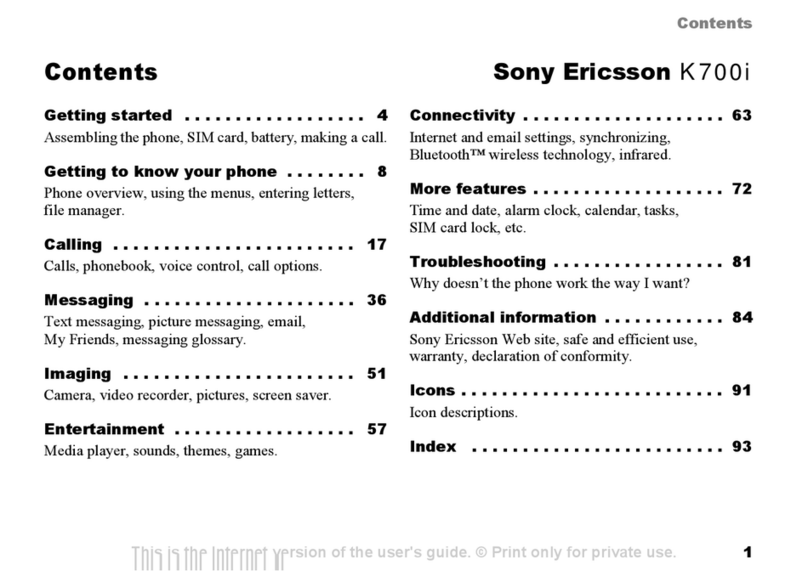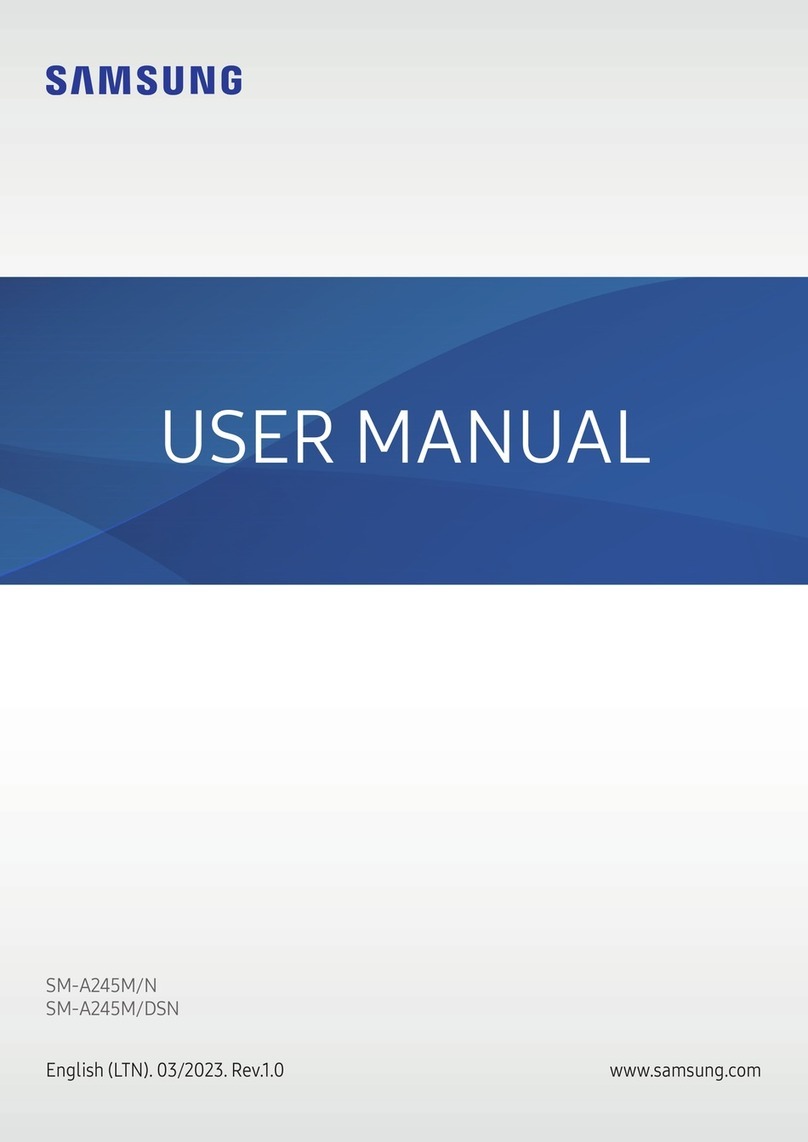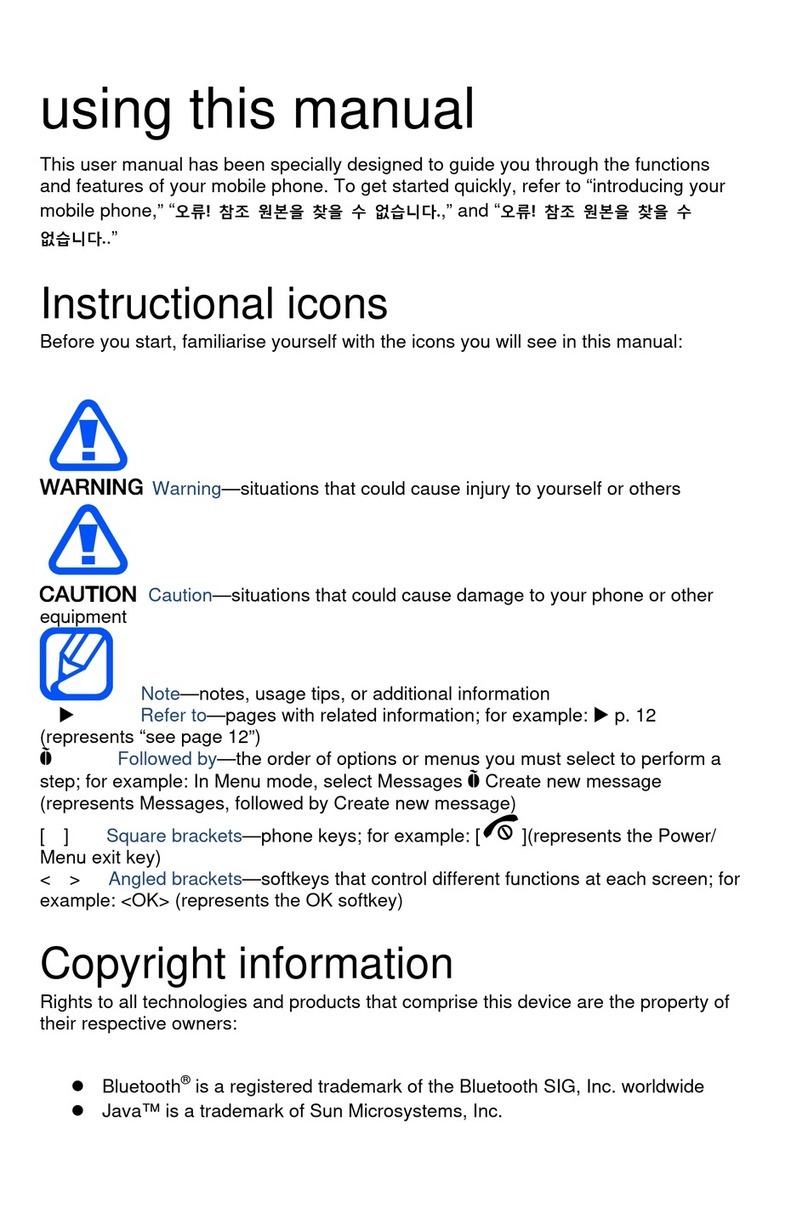Glab easyGPRSv3.0 User manual

1
https://play.google.com/store/apps/details?id=ua.com.glab.easygsmv40
www.glab.com.ua
Notification device
easyGPRSv3.0
(Communicator)
Installation and user guide
Lviv 2016

2
Contents
Review of functions. 3
Purpose. 3
Specifications. 4
Work preparation, connection and programming. 4
Requirements for SIM cards of GSM operator. 4
SIM card installation. 5
Purpose of inputs. 5
Connecting the device to SatelСА6, SatelСА10. 6
Template recording. 6
Programming. 6
Connecting the outputs. 6
LED indication. 7
Working modes of outputs. 8
SMS command format. 9
Programming the settings. 9
Output OK1, OK2 management. 9
Warranty. 10
Scope of delivery. 10
Appendix 1: Examples of the device connection. 11
Appendix 2: The GRAPH server program usage. 12

3
Review of functions
Programming without a computer.
Error indication while programming and working.
Cellular network signal strength indication.
Work with the Satel CA-6, Satel CA-10 centrals using the extended
protocol PC-16OUT.
2 potential inputs for supply breakdown transmission.
2 «open collector» type outputs, each of them can be managed from the
security monitoring station phone.
Programmable «life pulse»transmit time.
Work with the security monitoring station using the encrypted protocol
GLab-crypto™.
Security monitoring station notification of «power off» by transmitting a
«device reboot»event.
Security monitoring station notification of the supply voltage absence and
the accumulator discharge without using the device inputs.
Purpose
EasyGPRS communicator is a device of alarm signal transmission from centrals SatelCA6,
SatelCA10 and ST-704 to the security monitoring station, using the GLab-crypto™
protocol. External view of the device is shown on figure 1.
Figure 1.

4
Specifications
Performance characteristics
Quantity of inputs
4
Quantity of«open collector»type outputs
2
SIM card standard that is supported
GSM
Format of information transmission to the security monitoring station
Glab-crypto
Max. quantity of the security monitoring station server addresses
2
Real-time clock
Yes
Poweron ready time, seconds, not more than
30
Electrical specifications
Name
Parameter
Unit
Value
Device supply voltage
Upwrdc
V
+10…+15
Max. current consumption
Ipwrmax
mA
1000
Current consumption in stand-by mode, around
Ipwravg
mA
50
Max. voltage of log. «1» at the inputs I1 –I4
U1max
V
Upwrdc+1
Min. voltage of log. «1» at the inputs I1 –I4
U1min
V
Upwrdc*0,75
Max. voltage of log. «0» at the inputs I1 –I4
U0max
V
Upwrdc*0,25
Min. voltage of log. «0» at the inputs I1 –I4
U0min
V
0
Max. load current onОК1 and ОК2 outputs (not protected)
Iokmax
mA
100
Max. allowed DCvoltage on ОК1 and ОК2 outputs
Uokmax
V
15
GSM modem
Frequency range
GSM 850/EGSM 900/ DCS 1800/ PCS1900, automatic selection
GSM class
Small MS
Transmitterpower
Class 4 (2W) at EGSM900/GSM850
Class 1 (1W) at DCS1800/PCS1900
SIM interface
Support SIM card: 1,8V, 3V
Work preparation, connection and programming
Requirements for SIM cards of GSM operator.
The device supports standard GSM Phase1, GSM Phase2+ SIM cards with 1,8 and 3,3
Volts supply voltage. This means that any operator SIM card manufactured not earlier than
2004 will work.
The SIM card must be activated, also the PIN request when turning on the phone must be
cancelled for the card.

5
SIM card installation.
Connect the antenna to the SMA connector of the device (see figure 2).
Figure 2.
ATTENTION!
Turning on the device without the GSM antenna causes the GSM module to
malfunction. Note that the manufacturer’s warranty does not apply to the GSM module.
Insert the SIM card into the device as shown on figure 3.
Figure 3.
Purpose of inputs.
Table 1. Purpose of the device inputs.
Input
Purpose (for mode *С0* and *С2* )
Purpose (for mode *С1*)
I1
Alarm button. Active level –logical «0».
Alarm button. Active level –logical
«0».
I2
Tamperalarm. Active level –logical «0».
Tamperalarm. Active level –
logical «0».
I3
Signal «CLK» PC16OUT
Alarm zone 3. Active level –logical
«0».
I4
Signal «DATA» PC16OUT
Armgroup 1. Active level –logical
«0».

6
Connecting the device to SatelСА6, SatelСА10.
The (typical) example of device connection is displayed in Appendix 1.
Template recording.
An automatic recording of the necessary for the device to work monitoring station
administrator’s phone number is possible to the phone book of the SIM card. In order to
do so you need to delete an entry named «GBGPRS001» from the SIM card phone book
(if the card has already been used in the device), install the SIM card with removed PIN
request into the device and power the device. In around 30 seconds the red LED «4»will
light up –the template has been recorded into the SIM card phone book. Turn off the
power, remove the SIM card. See section LED indication for more specific information
on LED indication.
Programming.
Before the programming start, write down the phone number of the security monitoring
station (the operator’s mobile phone number) to the main SIM card cell named
«GBGPRS001» using your cell phone.
Insert the SIM card into the device. Power the device. In around 30 seconds the LED «4»
(red) will light up and the LED «3»(yellow) willblink 8 times with a long pause. It means
that the device is in the standby mode, awaiting an SMS with programming settings. The
SMS format is described in section SMS command format.
After receiving an SMS with the correct settings the device reboots and tries to establish
connection with the GRAPH server, IP addresses and port numbers of which were written
in the SMS. This mode is indicated by a constant glow of the LED «4» (red) and 7 times
blink with a long pause of the LED «3» (yellow). After a successful connection with the
GRAPH server is established, the device will send a request for an encryption key to the
security monitoring station operator. (See Appendix 2: The GRAPH server program
usage).
ATTENTION!
The GRAPH client must be running at the monitoring station operator’s workplace in
order for him to receive an encryption key request.
After obtaining a permission to receive the key, given by the operator, the device reboots
and enters the main working mode (information transmission to the monitoring station).
(See section LED indication).
Connecting the outputs.
ATTENTION!
The device outputs have limited loaded capability. Output current MUST NOT
EXCEED 100mA!

7
The device outputs are of «open collector»type and are commutated to the common
ground. The «LED» output is used to connect the LED indicating arm/disarm (see
Appendix 1).
The outputs can be used for remote management of various equipment, control of security
panel operation or arming confirmation indicating LED management by the security
monitoring station operator.
LED indication.
The LED indication (see figure 4) of the device works in three modes.
Figure 4.
Mode 1–error indication (red LED «4» glows constantly).
This mode is often used while the device is turning on to inform the user of the device’s
inability to work properly. The yellow LED «3» shows the error code. The green LEDs
«1» and «2» show the entry number where a mistake is found. For example, if LED «1»
blinks 7 times in a row after a pause, it means that the error is in entry №7 (see Table 2
and Table 5).
Table 2. Error codes of the device.
LED«3», number of
impulses
Error description
1
Error in the programming entry. Readthe error code and change the SMS
with the programming settings.
2
SIM carderror. Clear all the SIM card contacts or replace the card.
3
PIN code error. Turn off the PIN code request in the security settings.
4
No connection to the GSM modem. Contact the manufacturer’s service.
7
Awaiting the encryptionkey. Not anerror.
8
Awaiting an SMS withsettings. Not anerror.
ATTENTION!
The deviceindicates errors only for 30 seconds. Afterwards the device will reboot the
GSM modem and perform another attempt to enter the working mode. This does not
concern the standby mode while waiting for the encryption key or an SMSwith settings.
Mode 2 (red LED «4» does not glow or blinks) –working mode.
In this mode the red LED «4» can blink if there is no cellular network coverage or the
network signal strength is not enough for normal device operation. Yellow LED «3» is
used to indicate the operation of the GSM modem. If the LED «3» blinks 1 time per
second, it means that the modem is being registered in the GSM operator network. If the
LED «3» blinks 1 time per 3 seconds, the modem is already registered at the network. If
the LED «3» glows and fades one time per 0,3 second, the GPRS connection to the

8
GRAPH program is established. If the LED «3» blinks often, there is an ongoing attempt
to transmit a message. The green LEDs «2», «1» and the red LED «4»are used to display
signal strength of the cellular network operator. Approximate signal level values are
displayed in Table 3.
Table 3. Approximate level values of the cellular network operator signal.
LED
Level
Notes
«2»
«1»
«4»
glows
glows
does not
glow
Maximumsignalstrength.
does not
glow
glows
does not
glow
At about 50% signal strength. Enough
for normal device operation.
does not
glow
blinks
does not
glow
Signal strength is not enough for normal
device operation. External antenna is
needed.
does not
glow
does not glow
blinks
The device cannot operate. External
antenna is needed.
Mode 3 –indicating communication with the security monitoring station.
This mode is used control the data transfer in the security protocol GLab-crypto.
Yellow LED «3» indicates:
An attempt to transmit data to the monitoring station and wait for connection is
accompanied by fast blinking.
Working modes of outputs.
Every output of the device has 3 independent working modes (see Table 4).
Table 4. Working modes of outputs «ОК1» or «ОК2».
Values sent in SMS
Working mode description
0
The according output works in monostable mode. The output can be activated
ordeactivated with an SMS command. See the command format in section
«Output ОК1, ОК2 management».
1
The according output works in bistable mode. The output can be activated for
up to 99seconds with an SMS command. See the command format in section
«Output ОК1, ОК2 management».
2
The according output controls the LED that is indicating arming confirmation.
In case ofsuccessful transmission of the «armed»message to the monitoring
station, this output becomes activated for 30 seconds. This also applies to the
separate LED output (does not require programming).

9
SMS command format
Programming the settings.
A text SMS with commands «*1XX*СYYY*» inside the message body is used to
program the settings. List of commands is displayed in Table 5.
Table 5.
Command
Example
Note
*0ХХ*
*010*
Frequency of sending the test message to the security
monitoring station. Number х 30 seconds. In case of 00 the test
message will not be sent.
*1Х*
*10*
ОК1 working mode. 0 –monostable, 1 –bistable, 2–arming
confirmation (receipt).
*2Х*
*20*
ОК2 working mode. 0 –monostable, 1 –bistable, 2–arming
confirmation (receipt).
*3ХХХХ*
*31111*
Object number for transmission to the monitoring station. 4
digits.
*4ххх.ххх.ххх.ххх*
*4192.168.1.1*
IP address of the GRAPH receiver first line.
*5ххххх*
*510000*
IP port number (socket) of the GRAPH receiver first line. Must
contain 5 digits.
*6ххх.ххх.ххх.ххх*
*6192.168.1.2*
IP address of the GRAPH receiver second line.
*7ххххх*
*710000*
IP port number (socket) of the GRAPH receiver second line.
Must contain 5 digits.
*8хххххххххх*
*8internet*
Name of the GPRS access point.
*9хххххххххх*
*9www.kyivstar.
net*
Name of the GPRS connection.
*Ахххххххххх*
*А *
User name for GPRS access. If not used, there soul be a
«space»symbol between the «А» letter and «*».
*Вхххххххххх*
*В *
User password for GPRS access. If not used, there soul be a
«space»symbol between the «B»letter and «*».
*Cx*
*C0*
Input working mode. «0» - PC16OUT Satel, «1» - potential
inputs, «2» - PC16OUT ST-704.
*Dхх*
*D11*
Open collector management (see section Output OK1, OK2
management).
*Е*
*Е*
Settings reset.
*F*
*F*
Remote device reboot.
An example of SMS for settings programming:
*010*10*21*31234*4192.168.1.1*502050*6abc.com*702051*8internet*9www.kyivstar.net*A *B *C0*
ATTENTION!
All of the IP addresses in the example aboveare given only for understanding the SMS
format!
Note that the usage of the Cyrillic alphabet inside the SMS is unacceptable
Output OK1, OK2 management.
A text SMS with commands «*DXX*DYYY*» inside the message body are used to
manage outputs. List ofcommands is displayed in Table 6 and Table 7.
There can be several commands in the message body separated by the «space»symbol.

10
Table 6. Commands for SMS managing the outputs in mode «0». Monostable mode.
Command
(*DXX*DYY)
Description
*D10*
Deactivate the OК1 output
*D11*
Activate the OК1 output
*D20*
Deactivate the OК2 output
*D21*
Activate the OК2 output
Table 7. Commands for SMS managing the outputs in mode «1». Bistable mode.
Command
(*DXXX*DYYY*)
Description
*D1XX*
Activate the ОК1 output for ХХ seconds* **
*D2YY*
Activate the ОК2 output for YY seconds* **
* Maximum time for the output to be active is 99 seconds.
** If XX or YY equal 00, the output will be activated for minimum 2 seconds.
ATTENTION!
The device ignores incorrect commands or commands which contain Cyrillic letters in
the message body.
Warranty
ATTENTION! The manufacturer of the product is liable only within the limits of the
warranty obligation for the operation of the device itself and is not responsible for the
installation quality of the device, the coverage and service of the GSM operator, the
quality of the radio signal, etc.
The manufacturer is not responsible for any accident, caused by the use of the device by
both the owner and the third party.
All responsibility for using the device falls on the user.
The manufacturer is liable for warranty repair of the device during 24 month starting from
the time the product was sold.
The warranty does not apply to devices that are out of order due to the user’s fault, in
particular in case of the exploitation and installation rules violation, in case of the
damaged warranty seals, in case of mechanical damage presence, as wellas in case of
malfunctions, caused by lightning strike, short circuit in the network and so on. Also the
warranty does not apply to the SIM900 module which is a part of the device.
Scope of delivery
1.EasyGPRS communicator –1 pcs.
2.ADA0068 antenna –1 pcs.
3.Installation and user guide –1 pcs.
4.Plastic mounting racks –3 pcs.

11
Appendix 1: Examples of the device connection.
The examples of device connection to the central Satel CA6 (figure 5) and central Satel
CA10 (figure 6) are displayed below.
Figure 5. An example of the easyGPRS connection to the Satel CA6.
Figure 6. An example of the easyGPRS connection to the Satel CA10.
ATTENTION!
The connection of the I1, I2, OK1 and OK2 clamps is not obligatory.

12
Appendix 2: The GRAPH server program usage.
The server part of software is designed to receive and decrypt messages in GLab-crypto
protocol and to register new transmission devices while giving them an encryption key
(for protection against substitution). Decrypted messages in Shur-GARD ContactID
format are forwarded to a COM port in an existing system or to the other IP address.
The GRAPH system service will automatically launch after the program has been
installed. If the service is not launching, you should execute:
"C:\Program Files (x86)\GLAB\GRAPH\GRAPH.exe"-server
In order to launch a client part of the server:
Click the «GRAPH Client» icon.
In the dialogue window select the IP address of a computer where the server is running,
select the port number for connection and press the «Connect»button:
The default password in the program is «master».
The default password for access settings is «admin».
In the following pop-up window click «Tools/Language» and choose a preferable interface
language.
Afterwards open «Tools /Settings»:
Tab «General»:
-«Disable live data» - serves to allow or forbid viewing data that is received and
processed by the server in real time.
-«Command line port» - the connection between the client side and the server is
established through that port.
-«Live data live port» - the data to the real time event window is transmitted through
that port.

13
-«Notification line port» - a message about a key request by the object device is
displayed through that port.
-«Set new encoding key» - a code phrase (no less than 8 symbols), based on which
the program generates the encryption key.
ATTENTION!
The entered code phrase should bewritten and hidden. If you donot remember a
code phrase, after installation to a new computer none of the previously
connected deviceswill work.
Tab «Input interface»:
Here you should add a «New line», choose the IP address and the port number which will
be used by the server to receive data from the object devices and press «Start».
Tab «Service»:
-«Key request». A message in the standard Shur-GARD ContactID format, which is
forwarded to the output interface after receiving an encryption key request from the
object.
-«Auto test». A message like «5000 18YYYYЕ60200000[0x14]» (a chosen object
number will be written instead of YYYY) will be transmitted with a certain period
(in minutes), granted that the checkbox has been marked.

14
Tab «Output interface» - here it is possible to set the output for received and decrypted
messages to COM port of a computer or to an IP address.
If the station software understands the Sur-GARD receiver on the СОМ port, a free
program com0com (http://com0com.sourceforge.net) can be used to create a pair of
virtual serial ports. Install one of the com0com ports as a Sur-GARD port in the station
software. Then choose the second port from the pair in the «Output interface»tab, set
the speed, bit quantity, parity control, quantity of stop bits, presence of positive
response from the station software and press the «Start»button. If everything was done
correctly, the program should be ready for work.
For administrative convenience it is possible in the program to browse input and output
interface history files, as well as real time data. (Tab «File/Open»).
Table of contents




